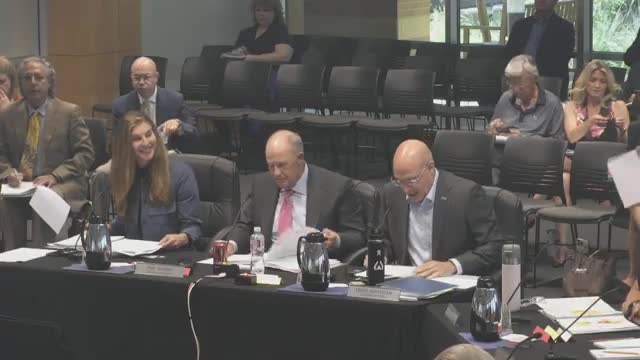Texas Water Supply Improves But Drought Still Lingers
August 23, 2024 | Lower Colorado River Authority (LCRA), Departments and Agencies, Executive, Texas
This article was created by AI summarizing key points discussed. AI makes mistakes, so for full details and context, please refer to the video of the full meeting. Please report any errors so we can fix them. Report an error »

Heavy rainfall in July has significantly improved water levels in Lake Travis, with combined storage increasing from approximately 1.075 million acre-feet on July 21 to over 1.155 million acre-feet by August 1. This marks an increase of nearly 80,000 acre-feet, bringing the total storage to 58% capacity. The rainfall, particularly beneficial for the western Llano River watershed, also contributed to meeting in-stream flow and bay inflow requirements.
Despite these improvements, officials caution that the drought is not over. While the drought monitor indicates a large portion of Texas is currently free from drought conditions, some areas, particularly in Kerr and Kendall counties, continue to experience persistent drought. Soil moisture levels remain variable, and the recent heat could quickly alter the current drought status.
Inflow data from July showed over 101,000 acre-feet, which is 127% of the long-term average for that month, and nearly four times the median inflow for July. This influx has helped stabilize water supplies, with projections indicating that combined storage will remain above one million acre-feet through February 2025, surpassing drought contingency plan triggers.
Looking ahead, the climate outlook suggests a potential shift to La Niña conditions by late fall, which could affect precipitation patterns. While there are increased odds for above-normal temperatures and precipitation along the coastal plains, forecasts for the hill country and central Texas remain uncertain, indicating a mixed outlook for rainfall in the coming months. Conservation messaging will continue as the region navigates these challenges.
Despite these improvements, officials caution that the drought is not over. While the drought monitor indicates a large portion of Texas is currently free from drought conditions, some areas, particularly in Kerr and Kendall counties, continue to experience persistent drought. Soil moisture levels remain variable, and the recent heat could quickly alter the current drought status.
Inflow data from July showed over 101,000 acre-feet, which is 127% of the long-term average for that month, and nearly four times the median inflow for July. This influx has helped stabilize water supplies, with projections indicating that combined storage will remain above one million acre-feet through February 2025, surpassing drought contingency plan triggers.
Looking ahead, the climate outlook suggests a potential shift to La Niña conditions by late fall, which could affect precipitation patterns. While there are increased odds for above-normal temperatures and precipitation along the coastal plains, forecasts for the hill country and central Texas remain uncertain, indicating a mixed outlook for rainfall in the coming months. Conservation messaging will continue as the region navigates these challenges.
View full meeting
This article is based on a recent meeting—watch the full video and explore the complete transcript for deeper insights into the discussion.
View full meeting
